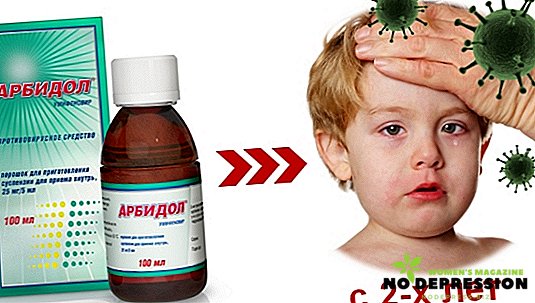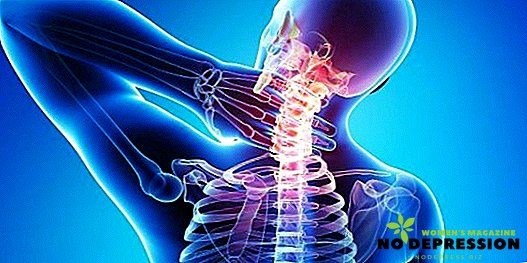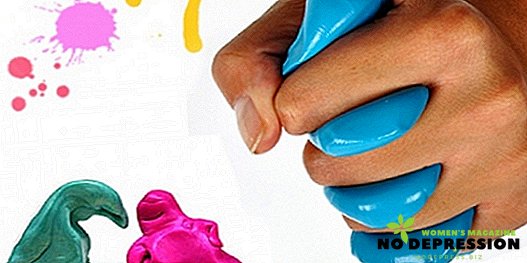Gynecological diseases of modern medicine are well known, among them Gardnerella, or bacterial vaginosis, is a common problem, recorded in 35% of all requests for professional treatment.
The disease is caused by a strong inflammatory process that arose against the background of infection in the body.

Where does the infection come from
The main causative agent of the problem is a microorganism (lives in anaerobic conditions) Gardnerella vaginalis. Located in most cases on the mucous membrane in the urogenital system. Its reproduction takes place in the same place.
Conditions and factors that contribute to the development and reproduction of the microorganism:
- Disorders and physiological disorders that led to disruptions in the hormonal background (including pregnancy and menopause).
- Imbalance of microflora in the intestines.
- Drug therapy based on the use of general antibiotics.
- Occurring in the body (including the urogenital system) inflammatory processes of varying severity.
- The use of drugs containing hormones in drug treatment and prophylactic purposes.
- Weakened immune system (illness, chronic diseases, lack of vitamins).
- Antidepressant therapy.
- Frequent change of sexual partners (promiscuous sex life).
- Physical and emotional fatigue.
- Frequent or prolonged stressful situations.
- Hypothermia
 A systemic failure in the body can also cause the development of this specific disease.
A systemic failure in the body can also cause the development of this specific disease.
The presence of genital infections or venereal diseases increases the likelihood of developing Gardnerella.
Procedures that are held locally and upset the balance in the vagina can adversely affect the state of health.
These include:
- Douching (vaginal microflora is washed out). The balance is disturbed, the processes of reproduction of the pathogen are launched.
- Use of medical suppositories (with substance 9-nonoxynol).
- Use of hygienic tampons.
- The use of vaginal capsules with active substances.
In order to avoid infection, it is necessary to minimize negative factors.
Gardnerella vaginalis
The microorganism belongs to the conditionally pathogenic flora group. In the body, it is present in minimal quantities in every woman (located on the vaginal mucosa).
If there are no factors that trigger the process of reproduction, health problems will not arise. In 90% of cases, the disease affects those who have an active or indiscriminate sex life, without applying protective measures (use of contraceptives, drugs).
What is dangerous disease
 Any irregularities in the body are reflected negatively.
Any irregularities in the body are reflected negatively.
In the case of the diagnosis of Gardnerella, it is necessary to begin immediate treatment, since the neglected form of the disease can cause serious complications.
The main danger lies in the fact that the microorganism contributes to the inflammatory process that affects the pelvic organs.
As a result, develop:
- adhesive disease;
- inflammation of the muscle layer of the uterus.
Also, experts identify a number of consequences that are no less difficult to treat:
- endometritis;
- defeat of the fallopian tubes (including their obstruction);
- pyelonephritis (urinary system disease);
- infertility.
It is important to remember that timely treatment can save a woman from complications. To do this, at the first signs of the disease seek the help of a gynecologist.
Pregnant women can also face this nuisance. The consequences of infection will be as follows:
- fetal abnormalities;
- uterine bleeding;
- preterm delivery;
- chronic inflammatory processes in the organs of the urogenital system;
- early rupture of the membranes (occurs during the birth process);
- pneumonia in newborns;
- insufficient weight of the newborn.
If any surgical intervention was performed (including cesarean section), then various pathologies may occur, which will become chronic among the effects of pathogenic microorganisms that caused the underlying disease.
Timely treatment of the mother can reduce the risk of pathologies and any diseases in the child.
Gardnerella Symptoms
Any disease has its own symptoms, which allows to form a clinical picture and make an accurate diagnosis. In the case of reproduction of microorganisms on the mucous membrane of the urogenital system, the woman will observe the following manifestations:
- abundant creamy consistency (yellow or grayish color);
- the presence of an unpleasant odor (fish) is the result of the breakdown of amines;
- inflammatory processes in the vagina (visible without special equipment);
- irritation;
- itching sensation (sometimes strong);
- pain during intercourse.
If one or more manifestations are present in a woman, it is necessary to consult a doctor.
Diagnostics
 The process of diagnostic examination for 90% consists of laboratory methods. The doctor at the first admission will conduct an examination and make a clinical picture of the disease, based on the patient's answers during an oral survey.
The process of diagnostic examination for 90% consists of laboratory methods. The doctor at the first admission will conduct an examination and make a clinical picture of the disease, based on the patient's answers during an oral survey.
The next step is to take a vaginal smear. The sample will undergo a microscopic examination, which will help to recognize the pathogen that negatively affects the mucous membranes.
Also under the microscope is determined by their number in the composition of the total microflora in the vagina.
The number of diagnostic measures includes an analysis that determines pH values - if it is increased, then it is anaerobic bacteria that have a negative effect, among which there may be gardnerella.
To confirm the diagnosis, an analysis of isonitrile is carried out, which reveals the presence of a large number of pathogenic microflora. The results of the survey, allowing to confirm the diagnosis:
- the presence of mucosal anaerobic bacteria;
- the balance of acidity in the vagina is shifted towards the alkaline;
- presence of unpleasant odor and discharge.
If all these indicators are defined, the doctor prescribes the appropriate stage of the disease treatment. Self-medication or another method of getting rid of unpleasant sensations can harm health.
How and what to treat: regimen
In 95% of cases, treatment is aimed at:
- the destruction of the main agent by drugs;
- restoration of optimal microflora in the vagina;
- general strengthening of the immune system.
The main treatment is carried out with the help of:
- Broad-spectrum antibiotics. The main medicines from this group are Clindamycin, Metronidazole.
- Antiseptic drugs (McMirror).
The course of antibiotic treatment lasts 1-1.5 weeks. Dosages are prescribed by the attending physician individually, taking into account the severity of the disease and the age of the patient.
 The use of candles is also included in the therapeutic program. In 90% of cases, suppositories are included in the treatment of pregnant women.
The use of candles is also included in the therapeutic program. In 90% of cases, suppositories are included in the treatment of pregnant women.
The duration of treatment is 7–10 days. Dosage is individual.
The main medicines from this group are Terzhinan, Hexicon.
Apply funds that can strengthen the immune system and restore the microflora.
Basic drugs:
- Bifidumbacterin;
- Acilact (candles);
- Lactobacterin (powder, suppositories).
Strengthen the immune system
- Wobenzym;
- Genferon (candles);
- Immunal;
- Interferon.
The course of use of these medicines is 1.5-2 weeks with the possibility of re-holding. The dosage is selected by the doctor according to the results of the examination.
Folk remedies
Effective in the treatment and prevention of drugs that belong to the popular recipes. The main means of treatment are oak bark, sage, a string (these components have antimicrobial and astringent effects). On the basis of their broths and infusions are prepared, which are used externally.
For healing mucous use vegetable oils (olive or sea buckthorn). The course of treatment is 7-10 days. The use of traditional medicine must be agreed with the doctor.
Features of treatment during pregnancy
The disease is diagnosed in early pregnancy. For the baby will not be harmed. Treatment of the disease is required to prevent pregnancy complications.
The peculiarity of rehabilitation therapy is the use of mild and gentle medicines. Antibiotics are completely excluded. The treatment program includes yogurts and other dairy products.
Disease prevention
After the main treatment or for the prevention of the disease, it is necessary to carry out some measures, such as:
- use of dairy products;
- taking vitamin complexes;
- timely visits to the specialist and testing;
- protection during intercourse (any convenient way).
Sexual interventions during and after treatment are not prohibited, but the use of contraception increases the likelihood of complete recovery or absence of the disease. Additionally, after treatment, you will need to pass tests to make sure that the activity of pathogenic microorganisms is absent.












